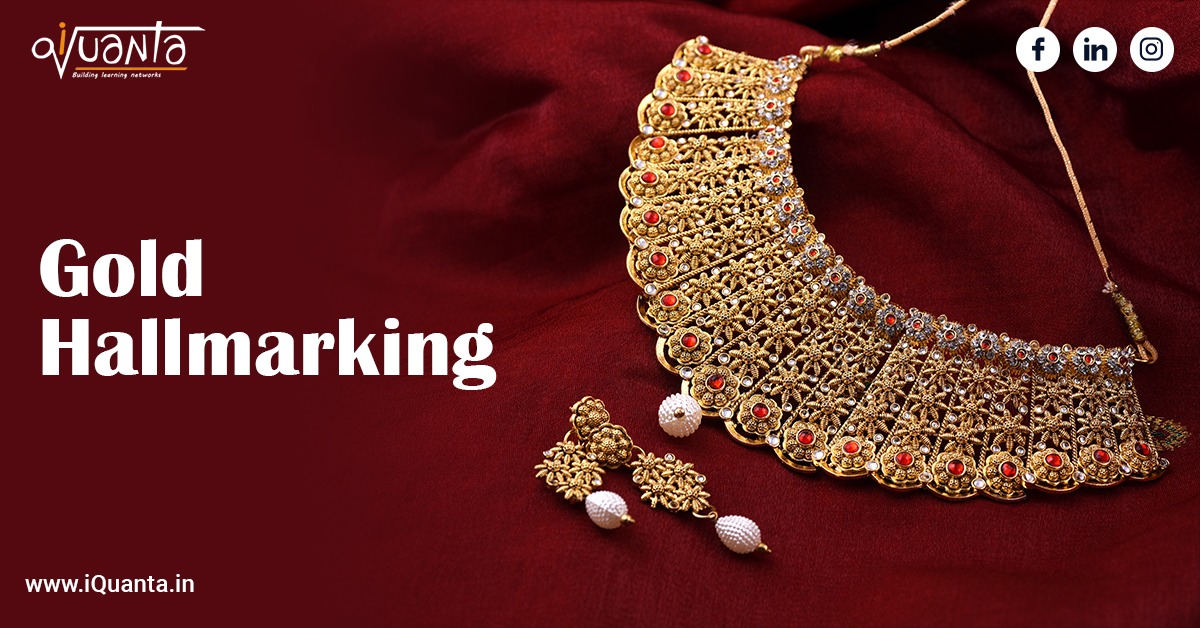Gold hallmarking is like a fitness test for jewellery. It is used to check if a piece of gold artefact is pure or not. Hallmark is a certificate authenticating the stated purity and fineness.
Till now, jewellers could sell gold as unmarked also. But in June, the government made it mandatory for everyone in the supply chain to hallmark gold jewellery at the point of first sale.
Now, most jewellers will have to send their inventory to a hallmarking centre and get it certified before selling them to consumers. This rule won’t apply to an ordinary consumer holding gold without a hallmark.
The existing customer can sell the gold to the jeweller but the jeweller can’t sell the piece to the next customer until it is hallmarked.
The government also wants to identify and track every piece of jewellery made and sold in this country. For that, they introduced HUID or Hallmarking Unique ID to go alongside the purity mark. Every piece of jewellery must carry this unique six-digit alphanumeric code.
HUID will help in identifying the jeweller, shop where the piece was sold, who bought it, the place that hallmarked it, the address and phone number of everyone involved in the transaction.
It is kind of a unique identifier where a new identifier needs to be attached each time old jewellery is melted to fashion something new.
Presently, jewellers can offload substandard products because of difficulty in tracing. Hence, the government is introducing gold hallmarking so that a unique ID can add a layer of accountability. This will also help in making the entire supply chain robust.
However, jewellers are not entirely happy with this whole HUID idea as it is not easy to tag every piece of jewellery. Small retailers would have to manually input details on the Bureau of Indian Standards’ website and then send it for hallmarking
Besides the issue of increase in overhead, there will be issues with processing centres too.
Annually around 100–120 million pieces of jewellery are manufactured in India out of which almost 60–70 million pieces are yet to be hallmarked. The current speed and capacity of hallmarking centres is about 200,000 pieces per day at which it would take 800–900 days (3-4 years) to mark the pieces.
It is important to speed up the process in order to turn the inventory quickly. Otherwise, the extra days spent in hallmarking will lead to backlogs leading to losses.
It is important to introduce accountability in the system but the decision needs to be taken keeping the interests of all stakeholders in mind.
The process of hallmarking needs to be made efficient and quick. The Internet should be leveraged to fasten the process. It should not take days to get that hallmarked certificate. Rather it should be done within a day.
Only if things are done in a planned manner by keeping the interest of the jeweller as well in mind, things can work smoothly.
To structure your CAT online preparation in an efficient way consider joining iQuanta which is a top online cat coaching institute and being a part of the iQuanta CAT 22 Course.
You can also check out and be a part of their Facebook group for peer learning, doubt solving and free material.
For 24*7 doubts-solving, FREE guidance and counselling and peer to peer learning, join the CAT preparation Fb group below:






